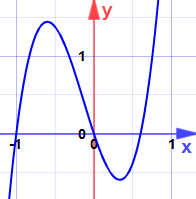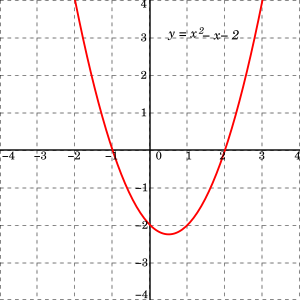TO FIND THE MAXIMA AND MINIMA OF FUNCTIONS FOLLOWING STEPS ARE FOLLOW:
- Let the given function is Y=0.
- Now differentiate the function w.r.t. to X.
- Differentiate of Y w.r.t. X is slope of curve.
- Now minimum and maximum, put slope of curve is zero.
- From above condition we get value of X.
- Now double differentiate the Y.
- Now put the value of X in Double differentiate.
- If double differentiate is less than zero then maxima will be occur at that point.
- If double differentiate is greater than zero then minima will be occur at that point.
- If double differentiate is zero then that point is called saddle point.

For example:
Let f(x)= y = x3 − 6x2 + 12x − 5now differentiate w.r.t. to X.
that is
For minima and maxima put
that is 3x2 − 12x + 12=0
we get X=2 only
Now double differentiate of f(x)
y'' = 6x − 12
put X=2 in the double derivative we get
y''=6*2-12=0
hence the test is fail and at X=2, the curve has neither has maxima and minima. This point is called saddle point.
EXAMPLE:
Find the maxima and minima for:
y = 5x3 + 2x2 − 3x
Now first differentiate and find the slope of curve.
i.e.
y’=15x²+4x-3
put slope is equal to zero i.e. 15x²+4x-3=0
we get
x = −3/5 and x = +1/3
Now double differentiate the function we get
y″=30x+4
Now at x = −3/5 value of y″=30(-3/5)+4=(-14)
and
at x = +1/3
y″=30(1/3)+4=14
Hence y″<0 at x = −3/5 and y″>0
from this we can conclude that the function has maxima at x = −3/5 minima at x = +1/3
THE GRAPH OF FUNCTION IS SHOWN BELOW:

Determine the maxima and minima of the function y=x³-x²-x+1.
First find the slope of the function
y′=3x²-2x-1
slope is zero when 3x²-2x-1=0
when
3x²-2x-1=0
3x²-3x+x-1=0
3x(x-1)+1(x-1)=0
(3x+1)(x-1)=0
from this x=(-1/3) and x=1
find double differentiation i.e. y″
y″=6x-2
y″(-1/3)=6×(-1/3)-2
y″(-1/3)=-4
and x=1
y″(1)=6×1-2=4
y″(1)=4
y″(1)>0 hence function has minima at x=1.
and
y″(-1/3)<0 hence function has maxima at x=-1/3
Minimum value
y(1)=1³-1²-1+1=0
and
Maximum value
y(-1/3)=(-1/3)³-(-1/3)²-(-1/3)+1=1.185
y(-1/3)=1.185
 IS CALLED QUADRATIC EQUATION. WHERE a, b AND c ARE CONSTANT.
IS CALLED QUADRATIC EQUATION. WHERE a, b AND c ARE CONSTANT.








